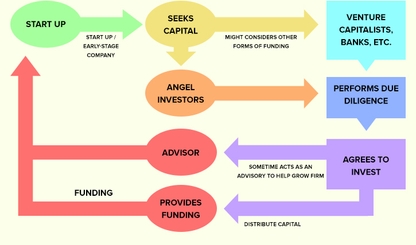Setting up your start-up is difficult when there are so many entrepreneurs in the race. It is also a confusing and challenging task for startups to decide where to start? And what to choose that ensures less risk and a high chance of success.
However, by adopting a lean startup methodology you can increase the chances of your startup’s success. In this blog, we’ll see how lean startup methodology can improve your startup business.
Let’s face it. Running a startup is risky, and sometimes, in the sequence of day-to-day events you’re likely to suffer from a fatal setback.
In fact, according to one of Forbes study, 9 out every 10 startup fail globally. And the main reason? – The same old process of starting a business.

Generally, most people come up with an idea, write its business plan, pitch it to different investors or bootstrap it themselves, launch the product, and start selling it as hard as possible.
Those who follow this process, make the false assumption that the right way to start a business is to start building the product as soon as the idea hits under the impression that once it is launched, customers will automatically stand in line to buy it.
In reality, that’s nowhere near the truth. In fact, most of the initial assumptions rarely survive. But, what if we tell you that the success of all your ideas can be ensured beforehand?
Though it may sound dreamy and hard to believe, but it is surely possible with the Lean startup approach.
What is lean startup?
Lean startup is a methodology that provides best practices to innovate at rapid speed against the dynamic market forces and external disruption.
Simply put, it is an approach (also known as Build-Measure-Learn) that helps entrepreneurs use their available resources in the best and most efficient way possible to manage startup risks, and at the same time, also search for a repeatable and scalable business model.

A Short history of the lean startup
While the first lean approach movement was started in Japan back in the 1950s, if we talk about the Lean startup approach today, there are only two names that come to mind: Steve Blank & Eric Ries.
Steve Blank was first set out to understand the world of today’s startups, looking for discovering patterns that contributed to successful startups’ success.
He then published all his findings in his books namely ‘4-Steps to Epiphany’ and ‘The Startup Owner’s Manual’.
Later, Eric Ries, one of the students of Steve Blank, applied the same findings to his own startup. When he succeeded, he wrote the book – The Lean Startup:
How Today’s Entrepreneurs Use Continuous Innovation to Create Radically Successful Businesses – to help other entrepreneurs & companies do the same.
Five Key principles of lean startup
Advocated by Eric Ries, the concept of Lean Startup is basically a new way of developing an innovative product that emphasizes a huge vision, in-depth customer insight, and fast iteration, all at the same time!

It means, anyone can establish a successful startup as long as they remember and apply the following key principles of Lean startup approach.
1. Entrepreneurs are everywhere
That means you! You could be anywhere and create a startup. The only key in successfully doing it is thinking big, beginning small, and scaling super-fast!
2. Entrepreneurship is management
If you’re an entrepreneur with a shiny product idea and want to establish a successful startup based on it, you need to hold yourself accountable and exercise highly-effective management skills.
That means, you must know the process (which we’ll talk about next) to successfully leverage its benefits.
Remember, it’s always easier to avoid setbacks and failures if you understand how to assess value and decide your next steps in advance.
Read More: How to help startups to achieve success?
3. Validated learning
With right validation, you can identify and address the key risks that are involved in your product or idea and make appropriate adjustments to position your business correctly.
You can do this by running experiments that test and demonstrate your idea.
4. Build, measure, learn.
The ‘Build, Measure, Learn is the key principle of the whole Lean Startup approach.
This means, the main aim of your startup is to transform ideas into different versions of a product, measure the metrics based on customer feedback, and learn whether you need to steer (make modifications) or persevere (continue same).
5. Innovative accounting
This principle holds founders or entrepreneurs accountable for the actions taken by them and its outcome through their description of milestones, measurement of progress, and prioritization of work.
All these metrics work together to introduce a new way of how product development should be done.
Three stages of lean startup
Like we discussed above, the Lean Startup approach is nothing more than just doing experiments constantly to reduce risks, use concrete findings to avoid possible setbacks, and interact with potential customers in a constant manner to understand their needs better.

Simply put, the Lean Startup methodology puts concrete data before assumptions, testing before implementation, and its potential customers before the business plan.
And the best part? – Lean startup approach does all this without complete the final product through its 3 stages of agile software development.
- Problem/solution fit stage
- Product/market fit stage
- Growth stage
Among all three, the product/market fit stage is the most important one. It’s because this stage greatly affects the method and strategy of leading the overall startup development.
And this is why it makes more sense to divide establishing the startup into a period before product/market fit and a period after the product/market fit stage.
Problem/solution fit stage
In this first stage, a startup basically tries to identify whether the problem it is trying to solve is worth solving or not.
By doing so, a startup can avoid wasting months or even years of developing a product that no customer wants.
Moreover, as you probably know, the ideas are free, but its execution can be expensive in most of the cases. Therefore, it is essential to choose concrete facts first, that proves that the right problem is being solved and the overall startup idea is reasonable.
In short, you need to have clear answers to the following three questions:
- Is the problem technically solvable?
- Whether the product or solution you’re building is something that your customers really need?
- Are the customers ready to pay for the solution or the product you’re building?
If the answer is yes to all three questions, only then the startup should move forward and build the Minimum Viable Product.
Product/market fit stage
In the second stage, startup basically tests the reliability and attractiveness of its product or solution for sales.
In simple terms, the startup needs to test different types of business models until it finds a successful business model for itself.
And through that business model, the startup must be acquiring customers regularly who make repeat purchases.
Simply put, the lean startup helps to find out the key functionalities of a product for which customers are ready to pay for and that solves the core problem for them.
Growth stage
The third stage of Lean startup is growth in which the startup primarily focuses on increasing the scope of its business model.
This target of increasing scope is usually achieved through combination of marketing, sales and choosing its appropriate channels.
Remember, for rapid growth, confirmation of the right marketing and sales channels is crucial, as it systematically collects feedbacks from the customers in every stage.
Agile or lean? - I’m confused!
While both custom software development methods work on the same principles to develop quickly & efficiently, but technically, Agile approach can be termed as a subset of Lean Startup approach.
The main difference between the two is: Agile helps a startup to go incrementally rather than developing everything at once. Lean approach, on the other hand, is all about build-measure-learn.

Lean is for everyone!
The Lean startup approach is nothing more but managing resources efficiently to minimize their wastage.
The ultimate goal of the Lean startup method is to streamline the entire product development journey to bring a big idea to the market successfully. In fact, Uber is a perfect example that started with Lean MVP.
And as you all know, today Uber is among highest valued startups globally, despite their controversies.
Overall, it is now safe to say that the Lean approach has already earned the badge of being an indispensable technique for startups, and by outsourcing your product idea to the right software development company, you can definitely ensure success for your startup idea.




